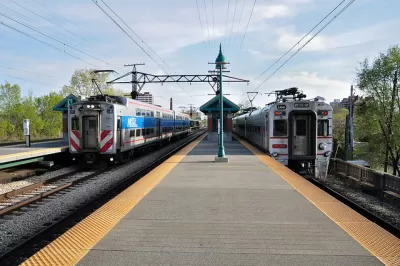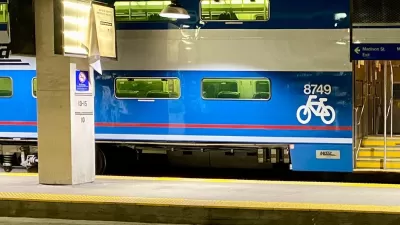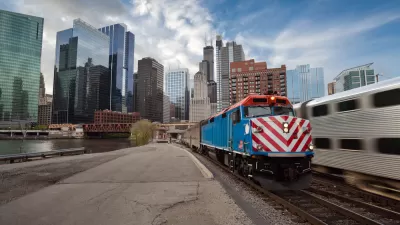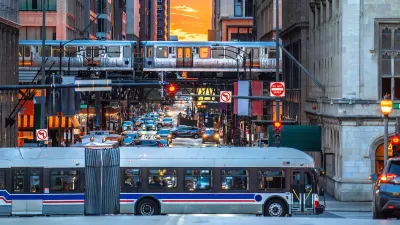Chicago's Metra has the resources to create frequent transit for a large swath of the South Side. Instead, their plan supports only the most fortunate along that train line.

Metra's plan for service changes represents a missed opportunity, Sandy Johnston argues in an OP-ED for South Side Weekly. "The current plan would enhance service to Hyde Park—but at the expense of cutting it to neighborhoods with higher levels of poverty, disinvestment, and disadvantage, such as South Chicago, West Pullman, and Morgan Park," Johnston writes.
Adding service makes sense because the South Side line is not built with the large distance between stops that other Metra trains have. These stops mean the line already has the potential to be a more traditional transit line, Johnson argues. "Stop spacing is extremely short, around half a mile in most places within Chicago proper. The line sports high-level platforms and electrification, rapid-transit-quality features that few commuter rail lines in the U.S. boast."
All this adds up to a big opportunity for a part of the city that could use the investment, and in fact, did have this kind of service in more prosperous years. "Chicago has advantages that none of those systems can boast: existing assets such as a high-capacity four-track right of way, electrification, high platforms that allow for level boarding, and new (though not modernly-designed, and poorly suited to rapid transit service) trains," Johnston argues.
FULL STORY: The Metra’s Not-So-Electric Plan

Study: Maui’s Plan to Convert Vacation Rentals to Long-Term Housing Could Cause Nearly $1 Billion Economic Loss
The plan would reduce visitor accommodation by 25,% resulting in 1,900 jobs lost.

North Texas Transit Leaders Tout Benefits of TOD for Growing Region
At a summit focused on transit-oriented development, policymakers discussed how North Texas’ expanded light rail system can serve as a tool for economic growth.

Why Should We Subsidize Public Transportation?
Many public transit agencies face financial stress due to rising costs, declining fare revenue, and declining subsidies. Transit advocates must provide a strong business case for increasing public transit funding.

How to Make US Trains Faster
Changes to boarding platforms and a switch to electric trains could improve U.S. passenger rail service without the added cost of high-speed rail.

Columbia’s Revitalized ‘Loop’ Is a Hub for Local Entrepreneurs
A focus on small businesses is helping a commercial corridor in Columbia, Missouri thrive.

Invasive Insect Threatens Minnesota’s Ash Forests
The Emerald Ash Borer is a rapidly spreading invasive pest threatening Minnesota’s ash trees, and homeowners are encouraged to plant diverse replacement species, avoid moving ash firewood, and monitor for signs of infestation.
Urban Design for Planners 1: Software Tools
This six-course series explores essential urban design concepts using open source software and equips planners with the tools they need to participate fully in the urban design process.
Planning for Universal Design
Learn the tools for implementing Universal Design in planning regulations.
Ascent Environmental
Borough of Carlisle
Institute for Housing and Urban Development Studies (IHS)
City of Grandview
Harvard GSD Executive Education
Toledo-Lucas County Plan Commissions
Salt Lake City
NYU Wagner Graduate School of Public Service





























